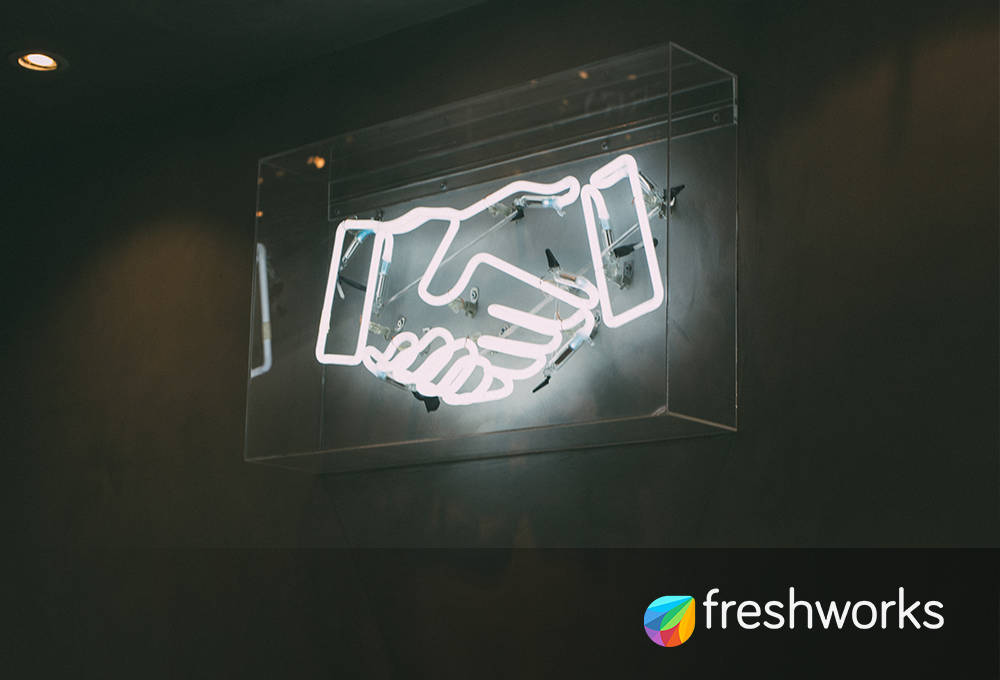Before we start, let's get one thing straight.
Today, sales enablement is not an option. It is a necessity. It forms the backbone of your company's sales team and is pivotal in impacting lead conversions, revenue growth, and other key metrics your sales team can deliver.
Even as we speak, companies are moving sales enablement from an aspect of marketing, sales, or customer support to a separate function. A 2019 sales enablement study by Quark, an omnichannel content automation software company, indicated that financial services, high-tech, and telecommunications companies saw the highest adoption of sales enablement processes and techniques.
Why is sales enablement important for companies?
Owing to low entry barriers, increased competition, more information access for buyers, higher bargaining power for buyers, and other factors, the sales team is under greater pressure to customize its conversations to sell better and achieve its targets, whether to bring in more revenue, reduce the sales cycle, or retain more customers.
One key goal of developing these materials, building a knowledge base, and creating training programs is to achieve specific objectives for customer service, such as improving customer engagement and ensuring that sales reps can effectively answer common questions while delivering exceptional service. Leveraging tools like Helpjuice can significantly aid in building and maintaining a comprehensive knowledge base for better customer support and sales enablement.
To enable sales teams to perform more effectively and efficiently is where sales enablement comes into play. While sales enablement can mean different things to different companies, ultimately, it's about increasing seller productivity and enhancing buyer experience.
In September 2019, CSO Insights and Highspot released a report analyzing the impact of sales enablement on companies worldwide. The report found that companies with an informal and random sales enablement process recorded win rates and quota attainment that were slightly over 3% points lower than average, compared to companies with a formal and strategic sales enablement process, which recorded higher-than-average win rates and quota attainment.
A formal sales enablement process works proactively to ensure that a company's sales process aligns with the customer's buying process, thus delivering better results. Accordingly, the report revealed that companies that aligned their sales process with the customer's path recorded 17.9% higher win rates and an 11.8% increase in quota attainment.
What sales enablement is NOT
There are many misconceptions about what sales enablement is.
In a 2019 article, Brian Lambert, Senior Director of Enablement and Readiness at Spectrum, who shares extensive knowledge on what sales enablement is and is not, wrote, "I spoke to my peers about misconceptions they have encountered in their organizations. It's eye-opening. Some believe sales enablement is a task that salespeople need to do better, such as sending better emails or filing expense sheets. Or, they think it's a job title - a training team re-branding, or a technology roll-out for sales teams that needs to be spearheaded by the sales enablement team."
Here are some more misconceptions:
- Sales enablement is not just about the content. While great marketing content may present convincing arguments about why a buyer should purchase your product or service, it may not prove useful unless your sales team is trained to use the content in the right context and at the right time.
- Sales enablement is not about having tools, technology, and information operating in silos. Are you engaging your sales team when determining what information they need, what tools they are familiar with, and how they want data and information to be delivered to them?
- Sales enablement is not a knee-jerk reaction to sales teams' need of the hour. It's not an effective sales enablement process if the team waits for the salesperson to return with a request and delivers information based on specific use cases. It is about being proactive and continually determining the sales team's needs and challenges, buyer's expectations, and overall company's goals, and presenting content and data to quicken the buyer's journey along the funnel.
- Sales enablement does not merely rely on reporting. The marketing team analyzes data and reports. Sales enablement is responsible for developing material based on the reports and delivering it to the seller to help them close more deals.
- Sales enablement is not about measuring the sales team's efficiency but identifying how the tools, technology, and content have helped sales teams achieve their targets better.
In the same article, Lambert explains that sales enablement leaders can be successful when they focus on overcoming specific sales challenges identified by sales leadership and have executive sponsorship to resolve them. He explains, "For example, if salespeople are below quota, sales enablement can help align to improve quota attainment. But not in a random, one-off manner. Instead, they should engage sales leadership with a thoughtful strategic portfolio of initiatives and programs that are co-created with sales leadership and have executive sponsorship."
How to get your sales enablement training right
1. Design specific objectives aligning with the company's revenue and growth targets. Then, define what collateral sales enablement teams need to create to help them achieve these targets. The collaterals can be as high-end as creating content on products and services, performing competitor mapping, analyzing potential buyer behavior, and providing actionable insights to quicken the prospect's buying journey.
2. Define clear responsibilities for the sales enablement team. Since sales enablement is a relatively novel concept, it often clashes with the sales operations team. While in many companies, sales operations and sales enablement teams report to the head of sales, the former comes into play early in the buying process. Sales enablement focuses primarily on content, training, and sales processes, whereas sales operations focus on negotiation and deal closing. The responsibility of the sales enablement team leans more toward content planning, sales communication, customer analysis, identifying effective customer engagement tools, performance analysis, and the like.
It's also imperative that the sales enablement team be represented by a leadership team that can manage its liaison with other departments in the company.
3. Sales enablement cannot operate in a silo. It must collaborate with other departments in the company, such as HR, marketing, customer support, and legal teams, to ensure that everybody aligns with the company's larger goals. For example, the sales enablement team needs to liaise with HR to ensure that talented salespersons are recruited to help companies achieve their sales targets. Once a newbie comes on board, it becomes the responsibility of the sales enablement team to train the sales representative on the company's products and services, optimal and contextual use of collaterals, and effective sales strategies to adopt based on prospective buyer analysis and such. In another instance, the sales enablement team needs to liaise with the marketing team to ensure that the content it creates is easily available across various platforms for buyers to consume.
4. Sales enablement is not a one-size-fits-all and one-time process. Keeping the buyer experience and buyer journey at its core, sales enablement needs to ensure that, on the one hand, it creates high-quality content such as blogs, white papers, webinars, and SEO content that caters to different buyer audiences, and on the other hand, develops customized training material such as presentations, performance insights, case studies, and other material for sellers to align with the buyer's needs. The content and information created by sales enablement teams must be relevant, effective, and customized to its internal (sales teams) and external (prospective buyers) audience. More importantly, training must happen continuously to ensure sales teams stay on top of their game.
5. With the sales enablement market slated to reach $2.6 billion by 2024, numerous tools are cropping up to make the task of anyone working in sales easier. While the tools are being marketed for specific purposes, such as sales asset management or sales analysis, their ultimate objective should be to help salespeople sell more efficiently and find the most efficient way to achieve the company's revenue objectives.
Be it sales acceleration tools, sales intelligence tools, content management systems, or CRMs, you need to ask yourself these questions before investing in the right technology: Is it aligning with your process? Is it easily accessible and navigable? Does it ensure that all content is available in a central location? Is your sales team comfortable using that particular tool or technology?
6. Measure the impact of your sales enablement collaterals on the sales team's performance. This is not just about measuring the sellers' efficiency and identifying how effectively they achieve their targets. It's also about analyzing the measurable impact the training, team coaching, and sales assets have had on the sales targets. Sales enablement teams can look at metrics: content usage, time to revenue, sales cycle, average win rate, and more.
Let's look at an example.
A 2020 Planning Assumptions report by SiriusDecisions revealed that companies often have a high number of sales assets, of which only 45% of the content is directly linked to deal progression, and 42% is linked with won deals. Thus, instead of spending time and resources on creating sales assets that may or may not be useful, companies can identify assets linked to won deals and create more related content that is more likely to be effective in deal closures.
To sum up, it's repeatedly proven that if done right, sales enablement can have a visible impact on buyer experience and accelerate a company's revenue and growth.
What we need to keep in mind is that sales enablement cannot operate in a silo, and it is not a one-time deal. It needs to tie in with the company's overall objectives, the messaging, content, and process need to resonate with every team in the organization, and the training and coaching need to happen continually and contextually for it to create a positive impact on sales.



